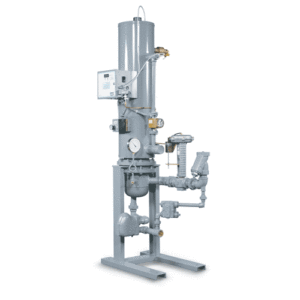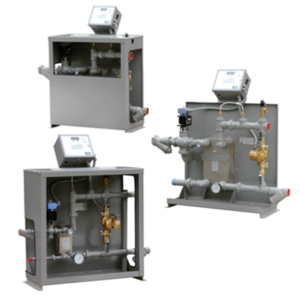Water Heater Alternatives – Part 1
February 8, 2021
Mulcahy has a long history of supplying solutions to the universal building requirement of providing potable hot water. The most common source is the standard tank-style heater with a natural gas burner. Storing a large amount of preheated hot water allows for immediate access to the heated water, but like any approach, there are downsides. A couple examples are:
Downside #1
Constant Storage: The constant storage of heat results in constant losses of energy, especially during long periods of no use. The most common burner used in these water heaters is an atmospheric burner located at the bottom of the tank. Flue gasses rise through a large passageway in the center of the tank to transfer heat to the water. When the burner is off, the hot water in the tank transfers heat into the same chamber, heating the ambient air.
Downside # 2
Installation Requirements: The natural gas burner brings with it many inherent requirements, including a gas line and a path for the flue pipe. Tank-type water heaters can also get quite large and heavy. This can make the old, reliable method unworkable.
One alternative to filling the need of supplying domestic hot water involves changing the entire approach.
Change #1
Do not store hot water. Create it only when necessary. The losses of the tank and the concerns of a large volume of stagnant water are nearly eliminated. The space requirements are also reduced.
Change #2
Do not use natural gas as the heat source. Tap into the central hot water system for an efficient source of energy. The gas line and its requirements are removed along with the flue pipe.
One option for providing instantaneous hot water is a packaged system which includes the heat exchanger and necessary controls. These systems are a great alternative to large storage tanks and flue pipes. Heat sources can range from high-pressure/temperature-steam to a low-temperature/highly efficient hydronic system. The nature of the heat source will dictate the heat exchanger size and type. See some examples below.
We’re glad to use our experience in previous installations to assist you in sizing, selecting, specifying, and installing these reliable and efficient systems.


